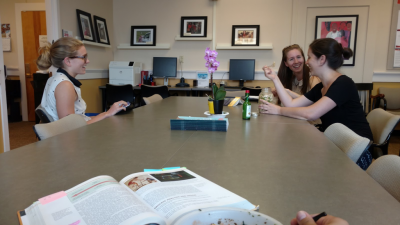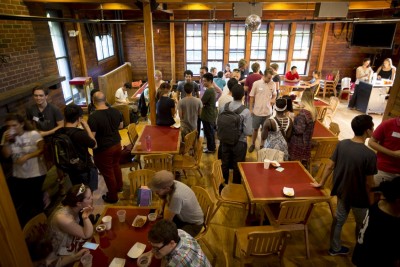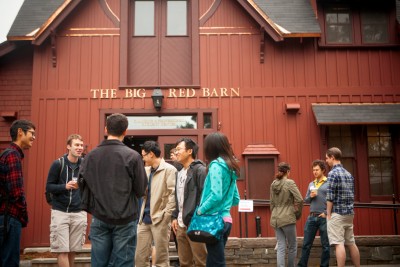What does it look like to be a CIPA student? This photo essay follows Sarah Cantatore (‘16) as she recreates her first semester at CIPA.
My day starts bright and early with CRP 5122: Intermediate Microeconomics for Public Affairs taught by Dr. Nancy Brooks. This is a core foundation course that fulfills the intermediate microeconomics requirement. Today, we learn how to graph indifference curves and budget constraints, and how we can use these tools to make comparisons between poverty alleviation policy options like vouchers or block grants.

After class, I meet with a project team to conduct phone interviews for CRP 6120: Devolution and Privatization: Challenges for Urban Public Management (an Administrative, Politics, and Policy Processes foundation course). In this course, taught by Dr. Mildred Warner, we learn about issues related to privatized public services, such as shared governance and risk management. We also work in teams to conduct research and prepare presentations for a conference of union representatives and local government officials, which we will be presenting at the end of the semester. My team (which included another CIPA student from Panama and a master’s student in Industrial Labor Relations) looks at how upstate New York unions and local governments can cooperate and work together in response to fiscal stress. I love that this course has a practical application to the academic content we are discussing in class.

Next up, lunch! One of my favorite lunch spots is the CIPA Lounge in Caldwell Hall. It is a great place to hang out with friends, work on group projects, and get FREE COFFEE! I chat with some friends and catch up on a little reading for class.
After lunch, it’s time for PADM 5340: Introduction to Evaluation with Dr. Margaret Johnson, which fulfills the decision analytic methods requirement. Today, we are learning about logic models and how to build them. Using a food access program as an example, we work in small groups to identify and map how program activities lead to the short, middle, and long-term outcomes the program aims to achieve. The logic model is an important first step in planning an evaluation and the group activity gives us some hands-on experience using the technique.

After class, I go to Mann Library to work on a project for PADM 5410: Nonprofit Finance & Management with Joe Grasso. In this assignment, we are given budget projections for a hospital that is running a deficit and we need to propose changes to revenues and expenses in order to balance the budget or create a surplus. There are several libraries on campus but Mann Library is where most CIPA students go. It is a large library with many different kinds of work spaces — quiet areas with desks, small study rooms that can be reserved in advance, and collaborative work spaces that are great for group projects. I use one of the computers with double screens so I can work easily between the budget spreadsheet I’m editing and the memo I’m writing.
To finish my day, I head over to the Big Red Barn (BRB), which is the Graduate and Professional Student Center on campus. Originally an old carriage house, it is now a study and hangout space for grad students. BRB has a little bit of everything: quiet study hours in the morning, lunch for sale at midday, $1 beer after 2pm everyday, and FREE POPCORN! It also hosts lots of events, and many CIPA student organizations use it for networking and social gatherings with other departments. Many people at CIPA love to hang out at BRB. That’s it for now, see you tomorrow, Cornell!



